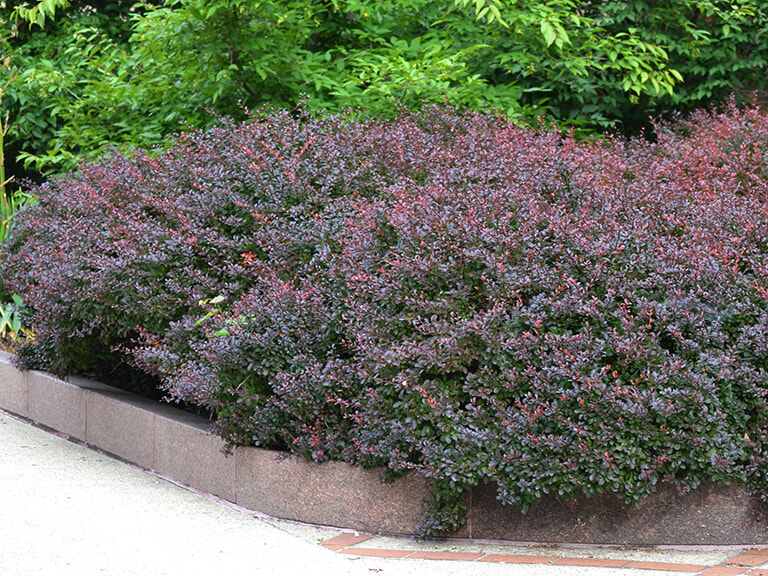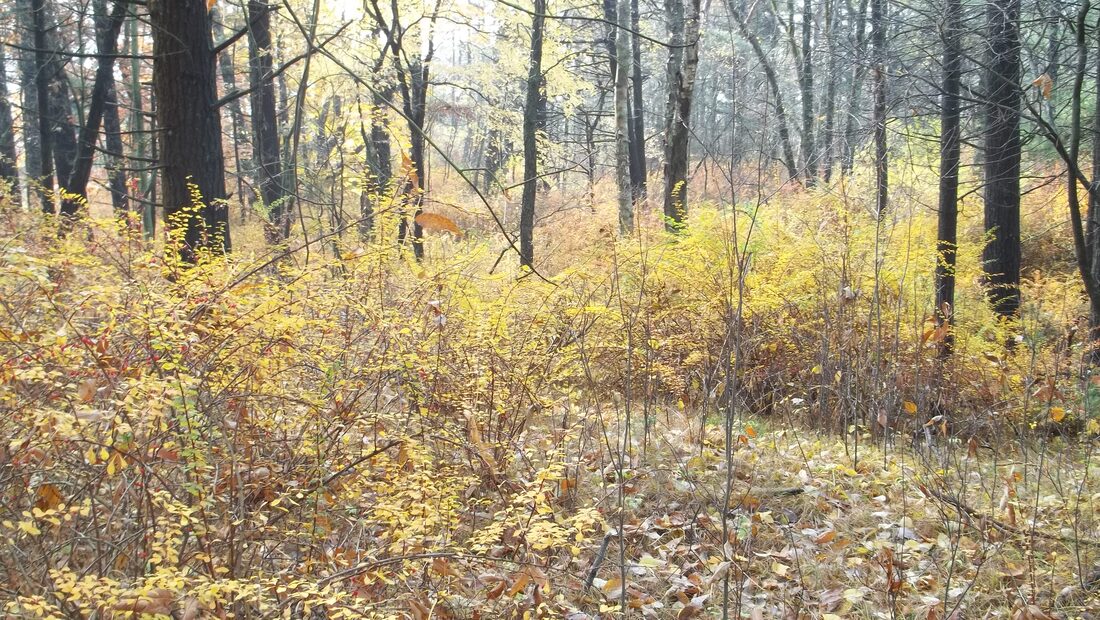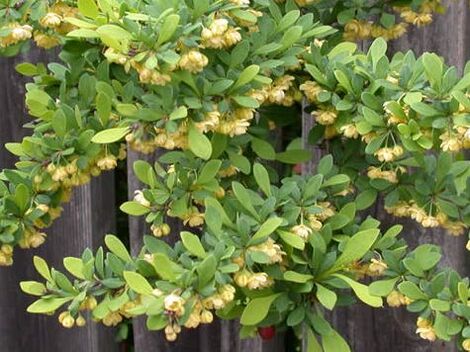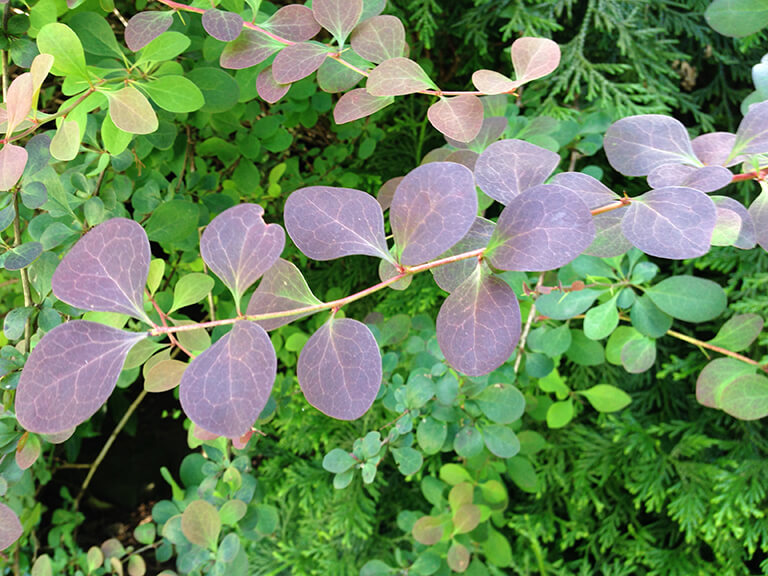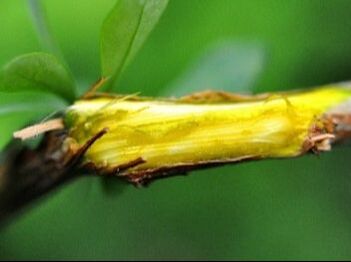Japanese Barberry (Berberis thunbergii)
|
Japanese barberry was introduced as an ornamental for landscaping, promoted as a replacement for common barberry (Berberis vulgaris) which is a host for black stem rust. Before it was illegal to sell or plant Japanese barberry in Indiana, cultivars with burgundy or lime green were commonly sold.
Japanese barberry is a sprawling thorny shrub that invades forests, forming dense, prickly thickets that crowd out plants and disrupt native ecosystems. It is also thought to harbor deer ticks that spread lyme disease. All cultivars of this species are invasive and generally revert to green leaves in forest settings, turning yellow in the fall. |
Identifying Japanese Barberry
Flowers
Flowers open in spring and are yellow to cream with 6 petals, borne individually or in few-flowered clusters.
|
Berries and Stem
Fruits are bright red, oblong berries that persist into winter. Birds spread the berries widely, starting infestations long distances from plantings. The stem has stout spines at the base of each shoot node.
|
Leaves
Leaves are small, alternate, entire, simple, and paddle-shaped. Cultivars with reddish-purple and lime green leaves are common, but they generally lose this color in shade, so infestations in forests often have green leaves.
|
Inner Bark
The inner bark of stems is bright yellow.
|
More About Japanese Barberry
|
Controlling Japanese Barberry
|
